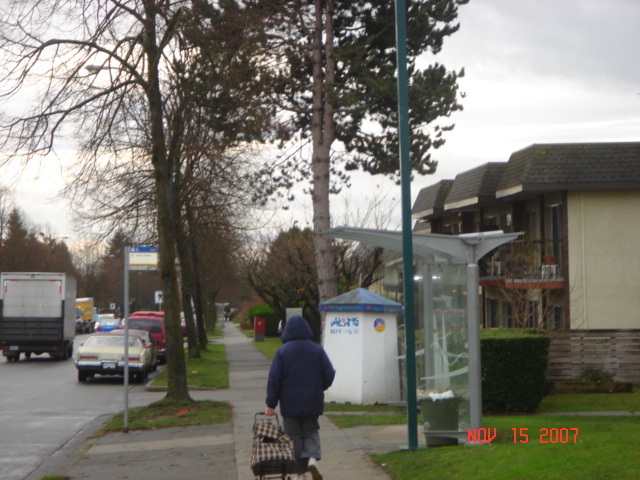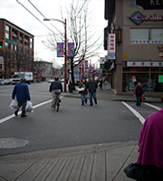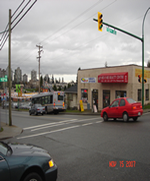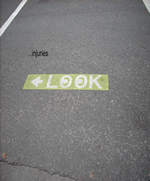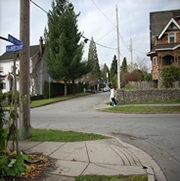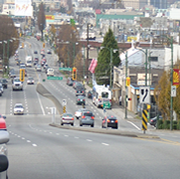DISCUSSION
In using a two dimensional, point-in-polygon approach to mapping out clusters of pedestrian injury, we discovered that the major clusters occurred in a variety of urban settings. Out of the 15 clusters that we identified, we used the top 7 clusters with the most accidents.
In contrast to clusters of pedestrian injury which occurred in high traffic areas, low-traffic suburban neighbourhoods were also among our strongest clusters. In particular, we found that T-intersections were a common characteristic of the suburban clusters. In these cases, we suggest that either stop signs be installed or a roundabout be constructed at this site to increase pedestrian safety.
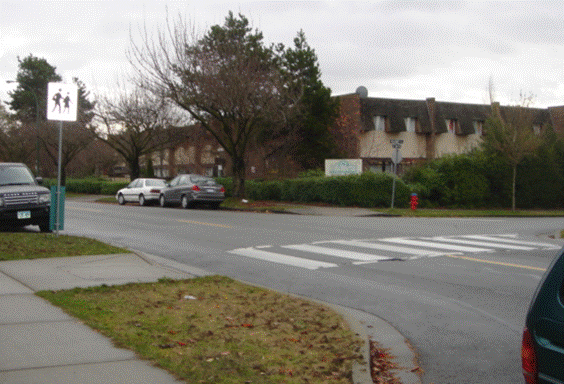
T-intersection at East 54 th and Killarney Street, Vancouver
T-intersections are problem areas and further investigation by traffic planners is required to improve public safety. The authors suggest that a traffic calming feature, such as a roundabout be constructed to minimize future injury. This will slow traffic as they move into the intersection and provide time for drivers to look for crossing pedestrians.
When scoring intersections, our study did not account for proximity to shopping centers and their parking lots. Attracting lots of pedestrian and vehicle traffic, these multiple entrances/exits buildings seem to be a factor that could increase the risk of pedestrian-vehicle collisions. The study also did not account for other factors like age and intoxication of the pedestrian, and population density of the area that other authors have mentioned in previous studies when examining pedestrian-vehicle collisions. In some cases we believe that socio-demographic variables and other factors not related to the built environment are the key factors that contribute to injury. .
Bus stops were observed at the majority of the intersections, but it was unclear if they played a significant role in increasing injury. It is plausible that pedestrians could be at increased risk near bus stops as people may react to an approaching bus by running across traffic to board. The bus may also impair visibility for both the drivers and the pedestrian moving into traffic.
In this research we considered the risk for pedestrians of getting injured. However, drivers are also at risk, and they can also get injured as a result of these kind of accidents. When analyzing the built environment, we acquired photographic documentation and gave scores by standing at the intersections; however we acknowledge that a driver might have a different view and perception of the built environment.
The inverse relationship between the intersection score and the number of injuries may also be the result of the perception of safety by pedestrians when crossing intersections with crosswalks. For example, at intersections with several safety features, pedestrians step into traffic as they may have a feeling of security and still get hit because of driver error. Therefore, even though intersections have safety measures, caution must still be employed when crossing the road.
In addition, a greater number of injuries were recorded for the downtown area and resulted in higher densities. Obviously, greater traffic volumes of motor-vehicles along with greater numbers of pedestrians at the same location has the potential for higher number of injuries.
